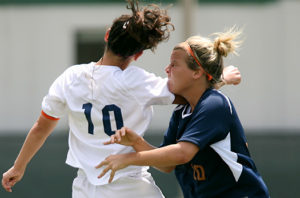Mar 24, 2021Saliva Concussion Tests Pave Way for Potential Non-Invasive Sideline Test
Distinct chemical ‘signatures’ for concussion have been identified in the spit of elite male rugby players, reveals research published online in the British Journal of Sports Medicine.
This potentially paves the way for a non-invasive and rapid diagnostic test for the condition that could be used pitch side and after the game at all levels of participation, suggest the researchers.
This is especially important because a concussion can be hard to diagnose, particularly at a grass-roots level, where most of it occurs, but where gold standard medical assessment by trained clinicians during and after a game isn’t readily available, they add.
As a result, a high percentage of concussions are missed, and concerns have emerged about the long-term brain health of athletes exposed to repeated concussions.
The short-term consequences of a missed diagnosis range from a prolonged recovery period, often with protracted and pervasive symptoms, to a heightened risk of further injuries, including catastrophic brain swelling, although this is rare, emphasize the researchers.
In the absence of objective diagnostic tests for concussion, diagnosis currently relies on a clinician’s interpretation of the observed signs and symptoms, and the results of formal clinical assessments.

But recent technological advancements in gene sequencing have allowed scientists to look into the diagnostic potential of molecules called small non-coding RNAs, or sncRNAs for short. sncRNAs regulate the expression of different cellular proteins that are linked to various diseases, such as cancer and Alzheimer’s disease.
So the researchers obtained saliva samples from more than 1000 male professional players in the top two tiers of England’s elite rugby union across two seasons (2017-19) of competition.
Samples were collected before the season began from 1028 players, and during standardized ‘gold standard’ head injury assessments at three-time points–during the game, immediately afterward, and 36-48 hours later in 156 of these players.
Saliva samples were also collected from a comparison group of 102 uninjured players and 66 who had sustained muscle or joint injuries, and so had not been assessed for head injury.
A combined panel of 14 sncRNAs differentiated concussed players from those with suspected traumatic brain injury, but whose head injury assessments had ruled out a concussion, and from the comparison group, both immediately after the game and 36-48 hours later.
This is an observational study, and the study design makes it clear that the sncRNA biomarkers can’t outperform the gold standard clinical assessment, caution the researchers.
But it is thought that saliva can receive cellular signals directly from cranial nerves in the mouth and throat, and so can rapidly register traumatic brain injury, making a saliva test particularly suitable for a sideline diagnosis, they suggest.
“Concussion can be hard to diagnose and is often missed, especially where a structured evaluation by an expert clinician is not possible–for example, at the grass-root level,” they write. “Small non-coding RNAs can provide a diagnostic tool that might reduce the risk of missing this type of injury at all levels of participation,” they suggest.
“In community sport, [sncRNAs] may provide a non-invasive diagnostic test that is comparable in accuracy to the level of assessment available in a professional sports setting,” while the test could be added to current head injury evaluation protocols at the elite level,” they add.
And as the biology of concussion is still not fully understood, sncRNAs might help to shed light on the response to injury as this evolves over time, they suggest.
» ALSO SEE: The High School Sports with the Highest Risk for Head Injuries
 “The detection of signatures of concussion at early time points in saliva (a non-invasively sampled biofluid) presents both at the sideline, and in primary care and emergency medicine departments, an opportunity to develop a new and objective diagnostic tool for this common clinical presentation,” they conclude.
“The detection of signatures of concussion at early time points in saliva (a non-invasively sampled biofluid) presents both at the sideline, and in primary care and emergency medicine departments, an opportunity to develop a new and objective diagnostic tool for this common clinical presentation,” they conclude.
*As an addendum to their findings, they add: “A patented salivary concussion test is in the process of being commercialized as an over-the-counter test for elite male athletes.
“Meanwhile our research team aims to collect further samples from players in two elite men’s rugby competitions to provide additional data to expand the test and develop its use. This will guide the prognosis and safe return to play after concussion and further establish how the test will work alongside the head injury assessment process.
We are also currently carrying out several additional studies to further validate and expand the test for use in different groups that were not included in the present SCRUM study, including female athletes, young athletes, and community sports players.”


